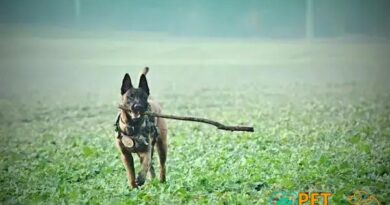What is: Aggression towards other animals
What is Aggression Towards Other Animals?
Aggression towards other animals is a behavioral response exhibited by dogs that can manifest in various forms, including barking, growling, lunging, or even physical attacks. This behavior can stem from a variety of factors, including fear, territoriality, or a desire to assert dominance. Understanding the underlying causes of this aggression is crucial for pet owners and trainers alike, as it can significantly impact the dog’s interactions with other animals and overall behavior.
Types of Aggression in Dogs
There are several types of aggression that dogs may display towards other animals. These include fear-based aggression, where a dog reacts aggressively out of fear; territorial aggression, which occurs when a dog feels its space is being invaded; and social aggression, which can arise during interactions with unfamiliar animals. Each type requires a tailored approach for management and training, emphasizing the importance of recognizing the specific triggers that lead to aggressive behavior.
Causes of Aggression Towards Other Animals
The causes of aggression towards other animals can be complex and multifaceted. Common triggers include past negative experiences with other animals, lack of socialization during critical developmental periods, and genetic predispositions. Additionally, a dog’s environment, including the presence of other pets and the owner’s behavior, can influence aggressive tendencies. Identifying these causes is essential for developing effective training and behavior modification strategies.
Signs of Aggression in Dogs
Recognizing the signs of aggression in dogs is vital for preventing potential conflicts with other animals. Common signs include stiff body posture, raised hackles, bared teeth, and intense staring. Additionally, a dog may exhibit vocalizations such as growling or barking. Understanding these signals can help owners intervene before an aggressive incident occurs, ensuring the safety of both their dog and other animals.
Training Techniques to Manage Aggression
Managing aggression towards other animals often involves a combination of training techniques and behavioral modification strategies. Positive reinforcement training is one effective method, where desirable behaviors are rewarded to encourage calm interactions with other animals. Desensitization and counter-conditioning can also be employed to help dogs gradually become more comfortable around other animals, reducing their aggressive responses over time.
The Role of Socialization
Socialization plays a crucial role in preventing aggression towards other animals. Exposing dogs to a variety of environments, people, and animals during their formative months can help them develop confidence and reduce fear-based aggression. Proper socialization helps dogs learn appropriate behaviors and responses, making them more adaptable and less likely to react aggressively in unfamiliar situations.
Consulting a Professional Trainer
In cases of severe aggression towards other animals, consulting a professional dog trainer or behaviorist is highly recommended. These experts can assess the dog’s behavior, identify triggers, and develop a customized training plan. Professional guidance can be invaluable in addressing aggression, ensuring that both the dog and its owner feel safe and confident during interactions with other animals.
Preventing Aggression in Puppies
Preventing aggression towards other animals begins in puppyhood. Early socialization, exposure to various stimuli, and positive experiences with other animals can lay the foundation for a well-adjusted adult dog. Puppy training classes can also provide valuable opportunities for socialization and learning appropriate behaviors, helping to mitigate the risk of aggressive tendencies as the dog matures.
Understanding Body Language
Understanding canine body language is essential for recognizing potential aggression towards other animals. Dogs communicate through their body posture, facial expressions, and vocalizations. By learning to interpret these signals, owners can better gauge their dog’s emotional state and intervene before aggression escalates. This knowledge fosters a safer environment for both the dog and other animals.
Long-term Management of Aggression
Long-term management of aggression towards other animals requires ongoing commitment and vigilance from dog owners. Consistent training, regular socialization, and monitoring of the dog’s behavior are crucial for maintaining progress. Additionally, owners should remain aware of their dog’s triggers and be prepared to implement strategies to manage aggressive responses effectively. With dedication and the right approach, many dogs can learn to coexist peacefully with other animals.




